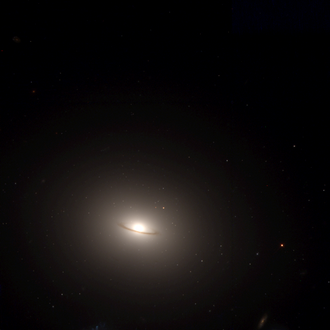NGC 1199
| Galaxy NGC 1199 |
|
|---|---|

|
|
| Photo from the Hubble Space Telescope | |
| AladinLite | |
| Constellation | Eridanus |
|
Position equinox : J2000.0 , epoch : J2000.0 |
|
| Right ascension | 03 h 03 m 38.411 s |
| declination | -15 ° 36 ′ 47.50 ″ |
| Appearance | |
| Morphological type | E3: |
| Brightness (visual) | 11.4 mag |
| Brightness (B-band) | 12.4 mag |
| Angular expansion | 2.3 ′ × 1.7 ′ |
| Position angle | 63 ° |
| Surface brightness | 13.0 mag / arcmin² |
| Physical data | |
| Affiliation | HCG 22 NGC 1103 group LGG 76 |
| Redshift | 0.008573 ± 0.000017 |
| Radial velocity | 2570 ± 5 km / s |
|
Stroke distance v rad / H 0 |
(113 ± 8) · 10 6 ly (34.5 ± 2.4) Mpc |
| history | |
| discovery | William Herschel |
| Discovery date | December 30, 1785 |
| Catalog names | |
| NGC 1199 • PGC 11527 • MCG -03-08-067 • 2MASX J03033838-1536486 • HCG 22A • GC 643 • H II 503 • h 282 • GALEX ASC J030338.47-153647.8 • LDCE 217 NED004 • WISEA J030338.42-153648.4 | |
NGC 1199 is an elliptical galaxy of Hubble type E3 in the constellation Eridanus at the southern sky . It is estimated to be 113 million light years from the Milky Way and about 75,000 light years in diameter. Together with NGC 1189 , it forms gravitationally bound galaxy pairs.
Together with NGC 1189 , NGC 1190 , NGC 1191 , NGC 1192 , it forms the Hickson Compact Group HCG 22 .
The object was discovered by William Herschel on December 30, 1785 .
Web links
Commons : NGC 1199 - collection of images, videos, and audio files
